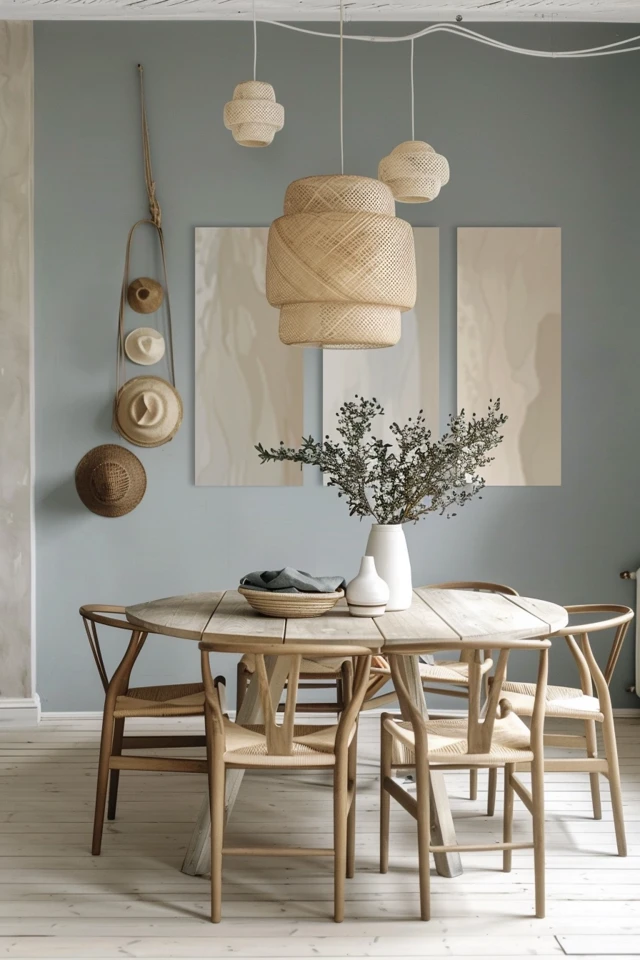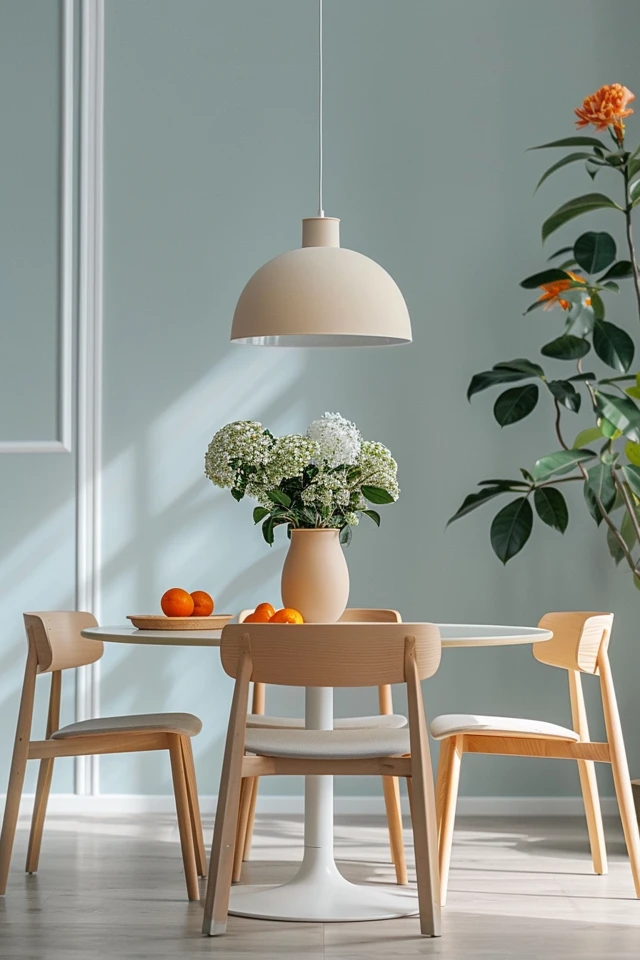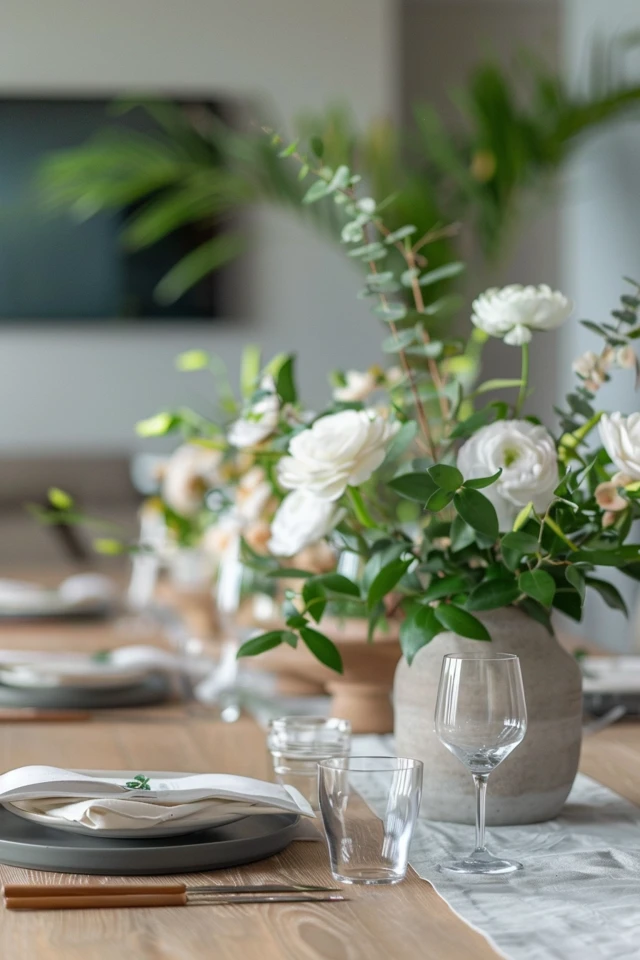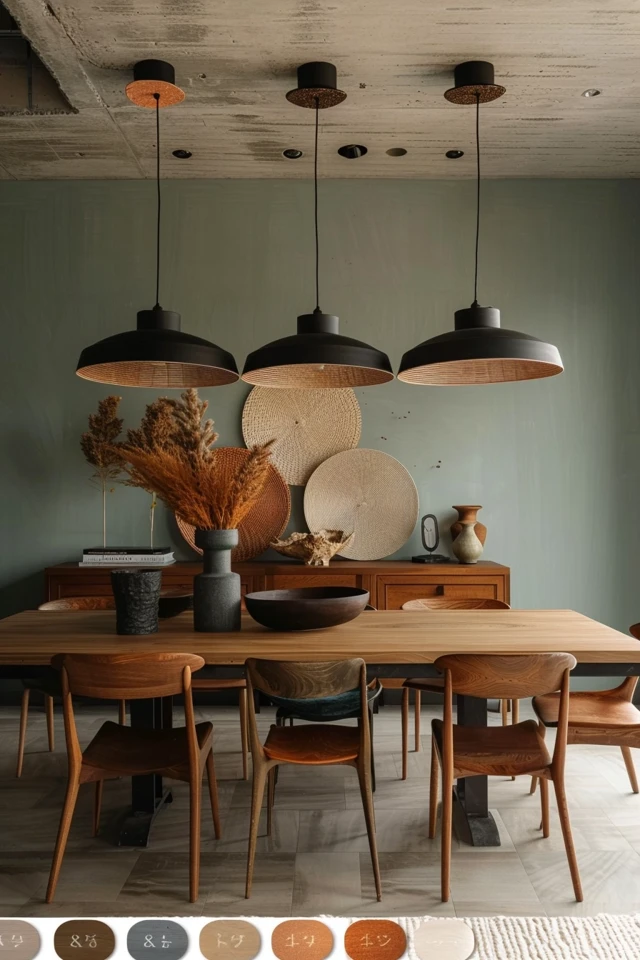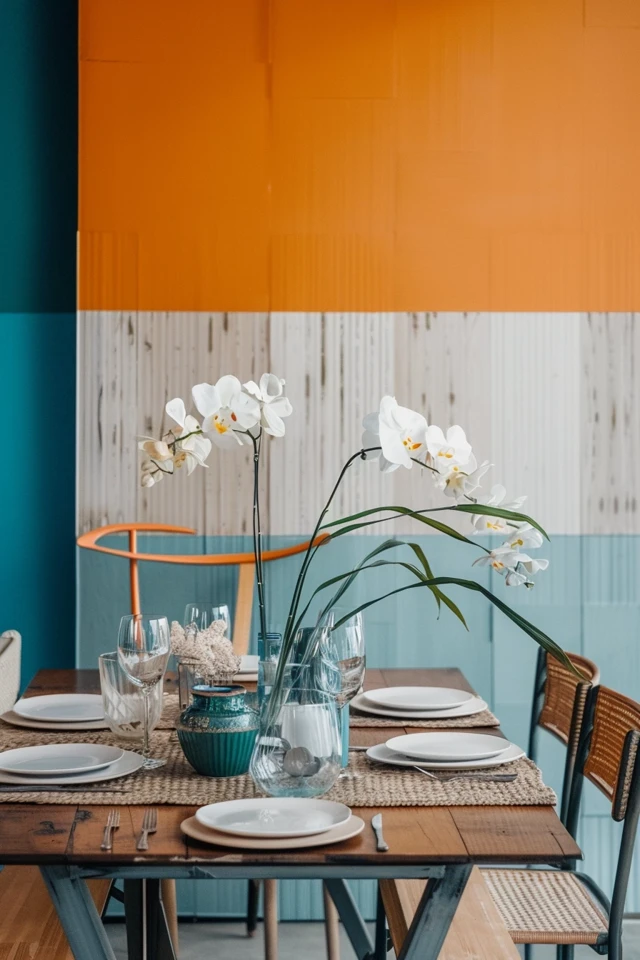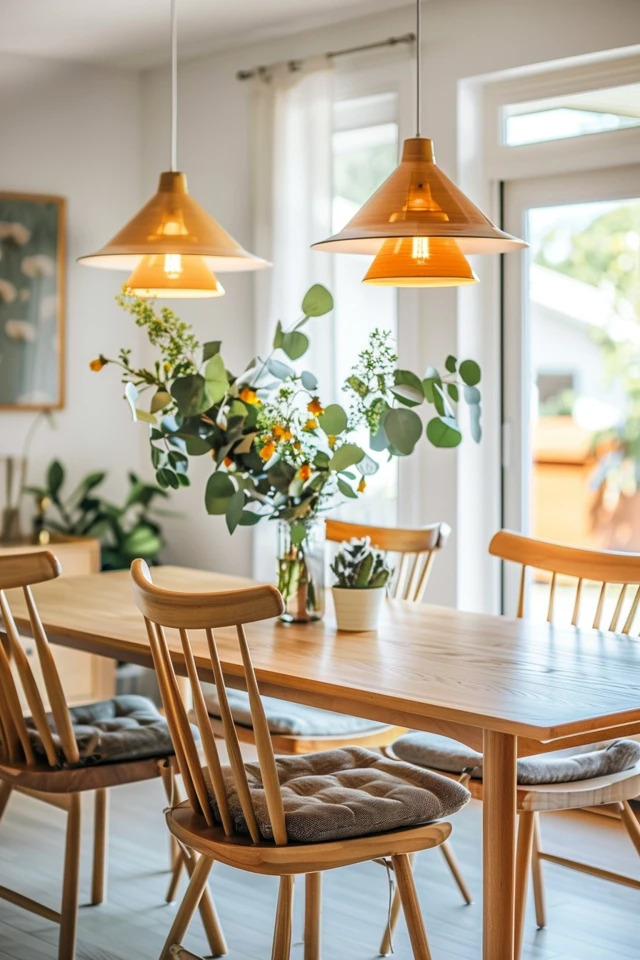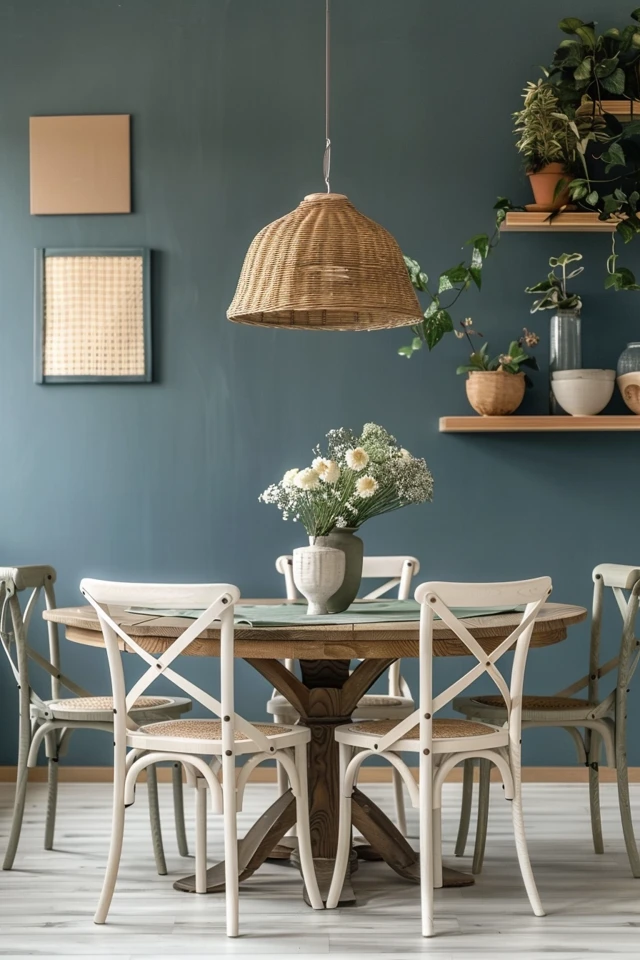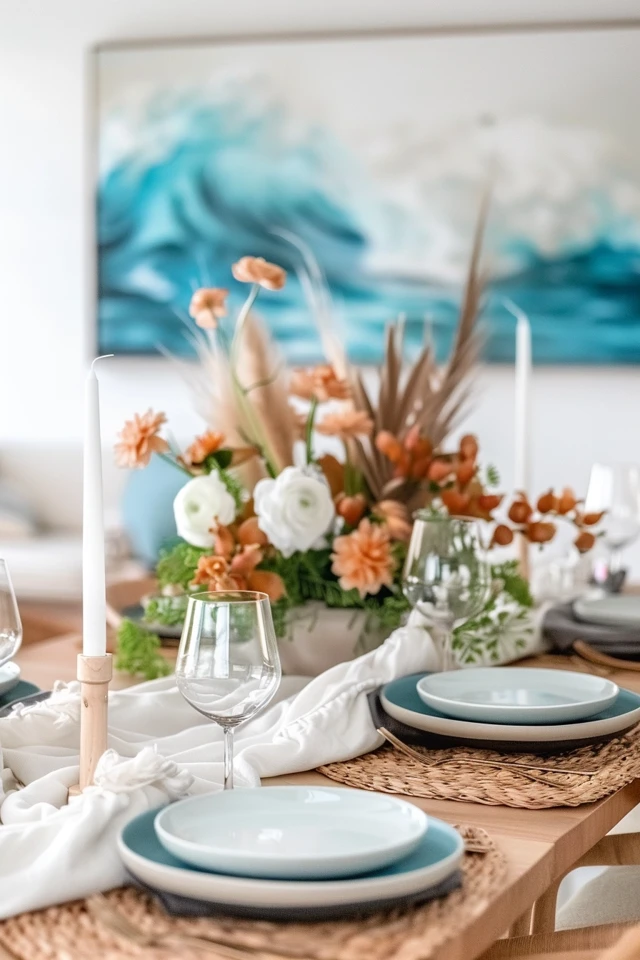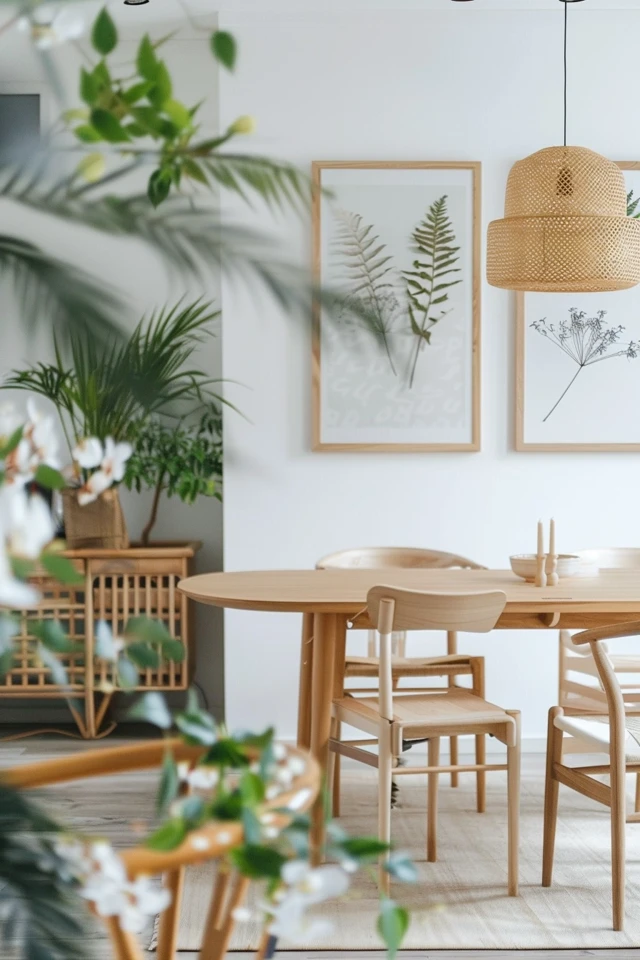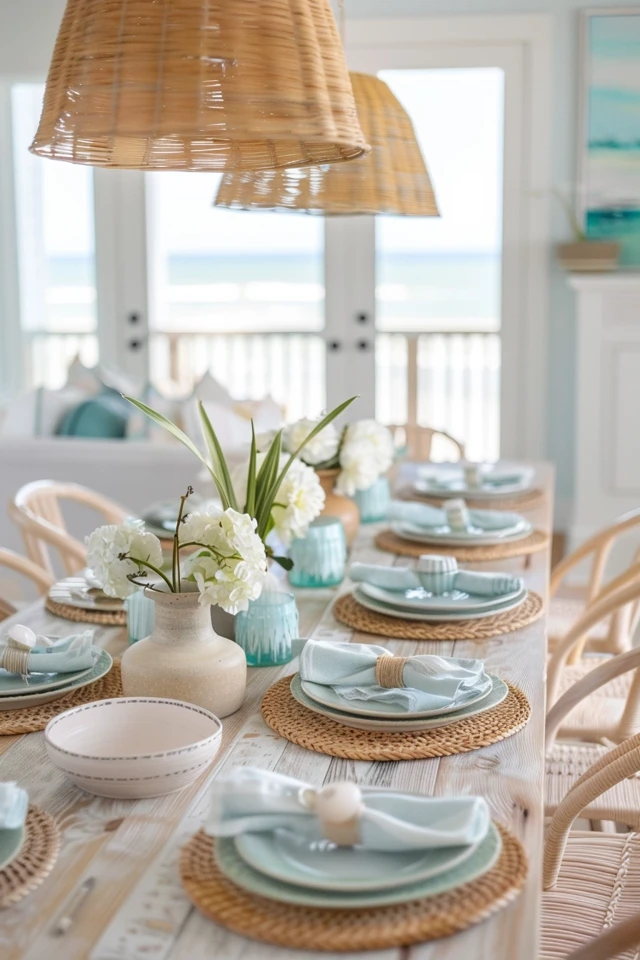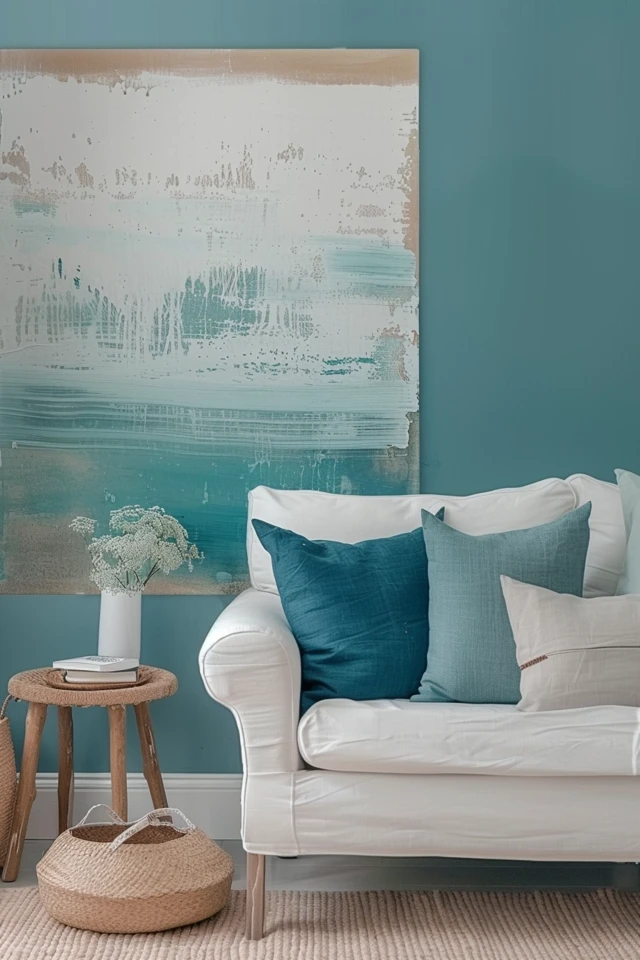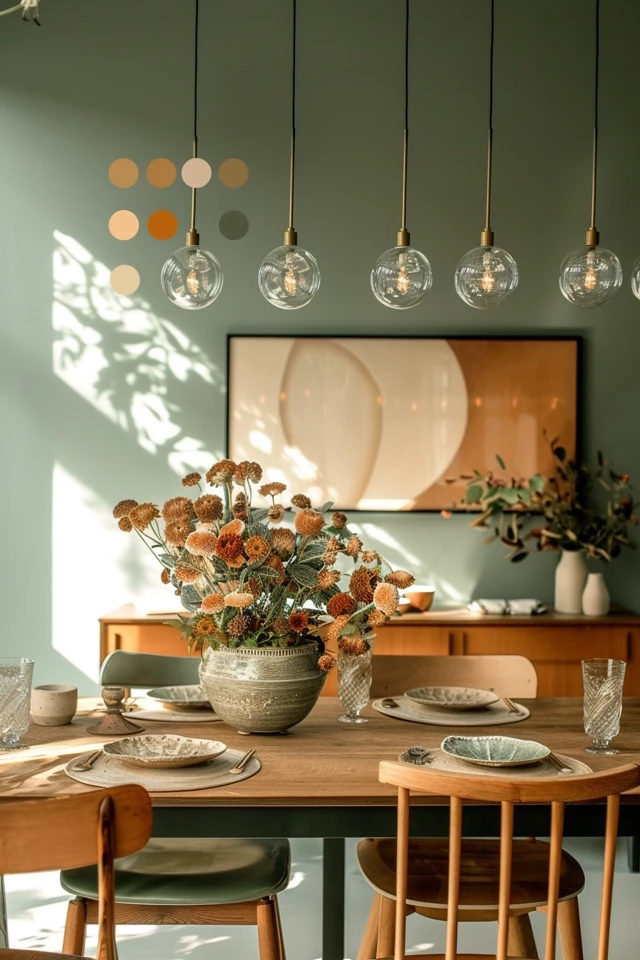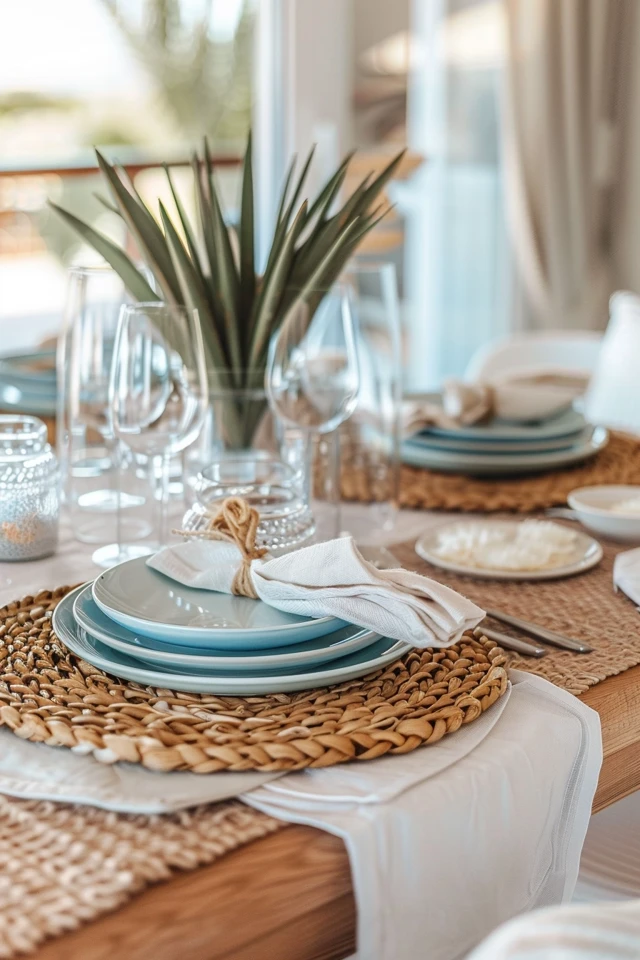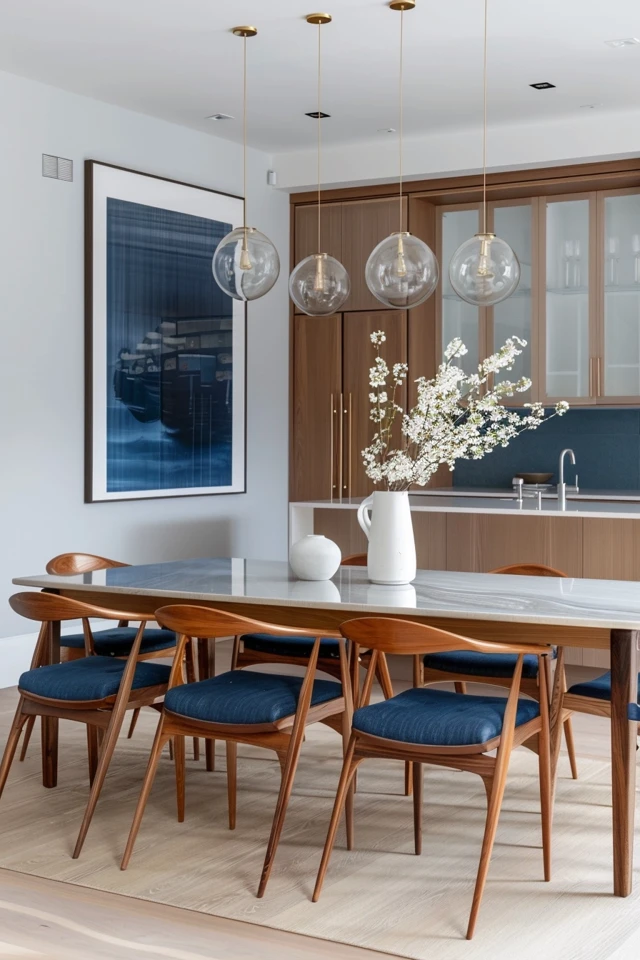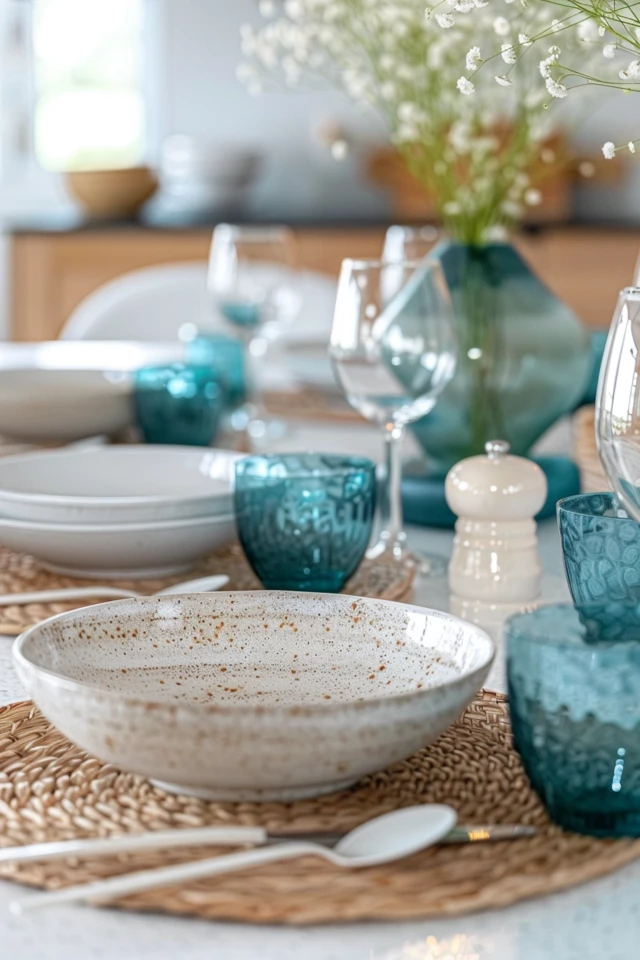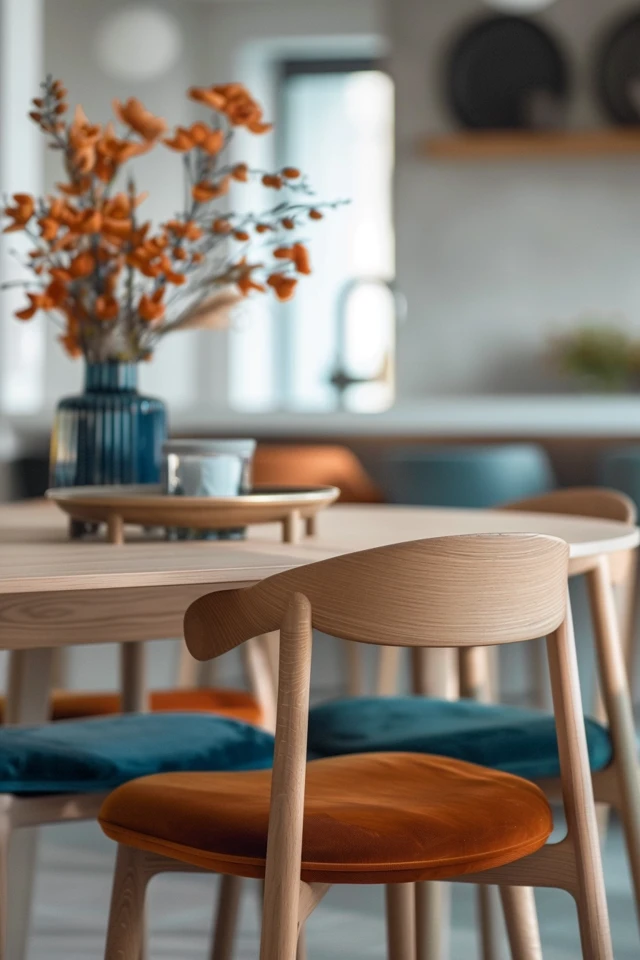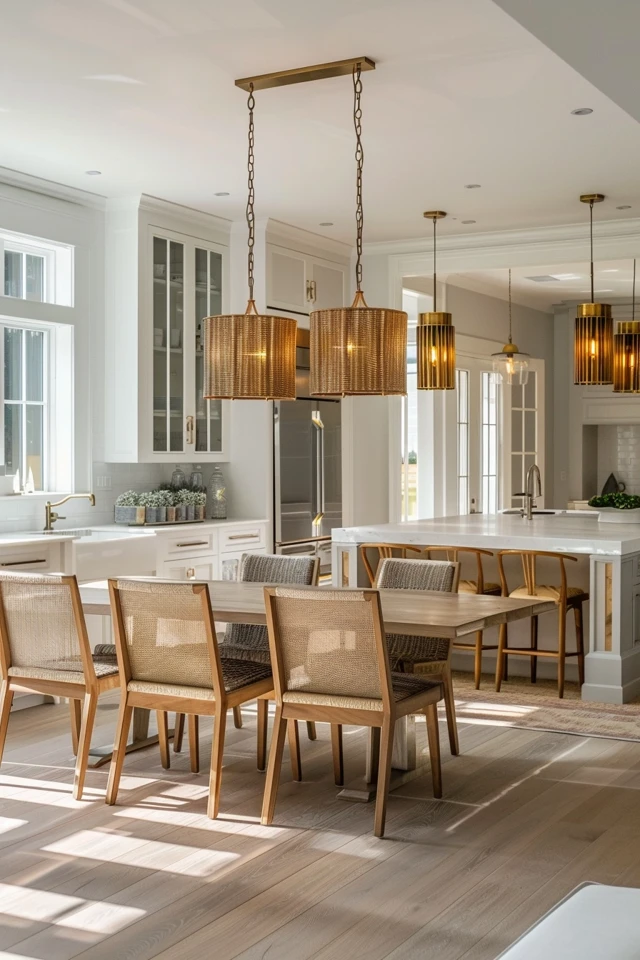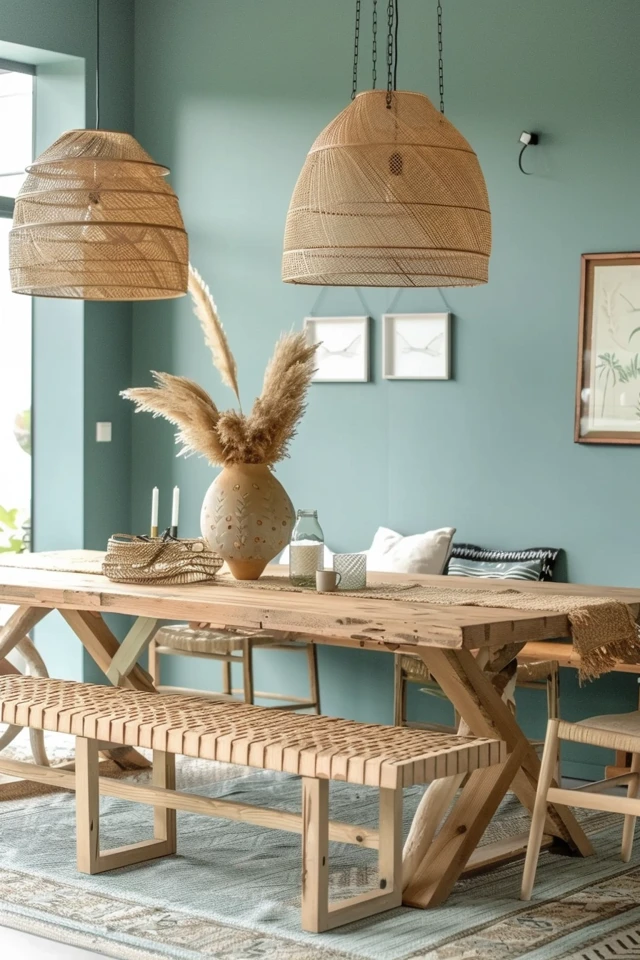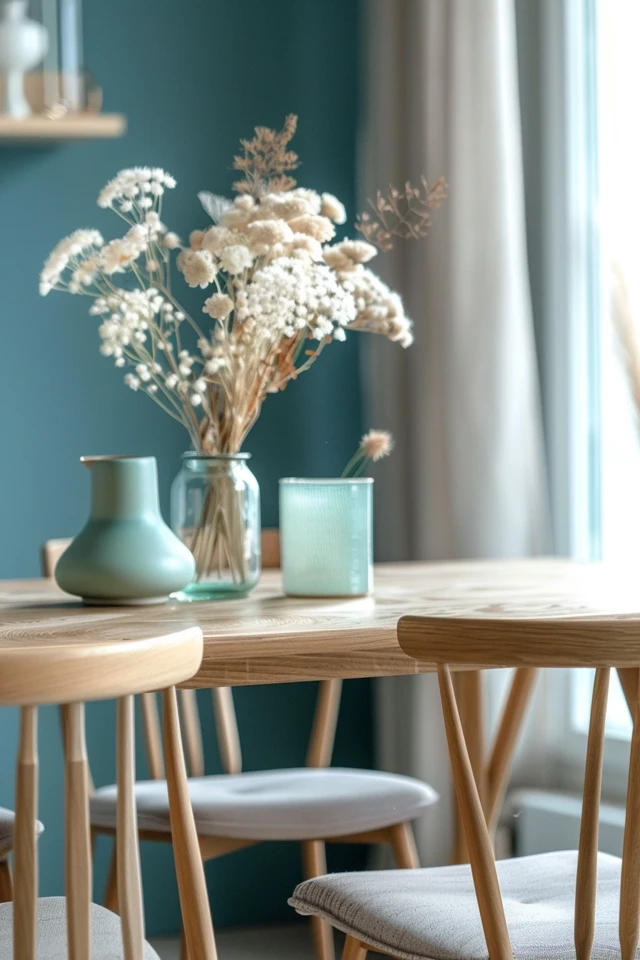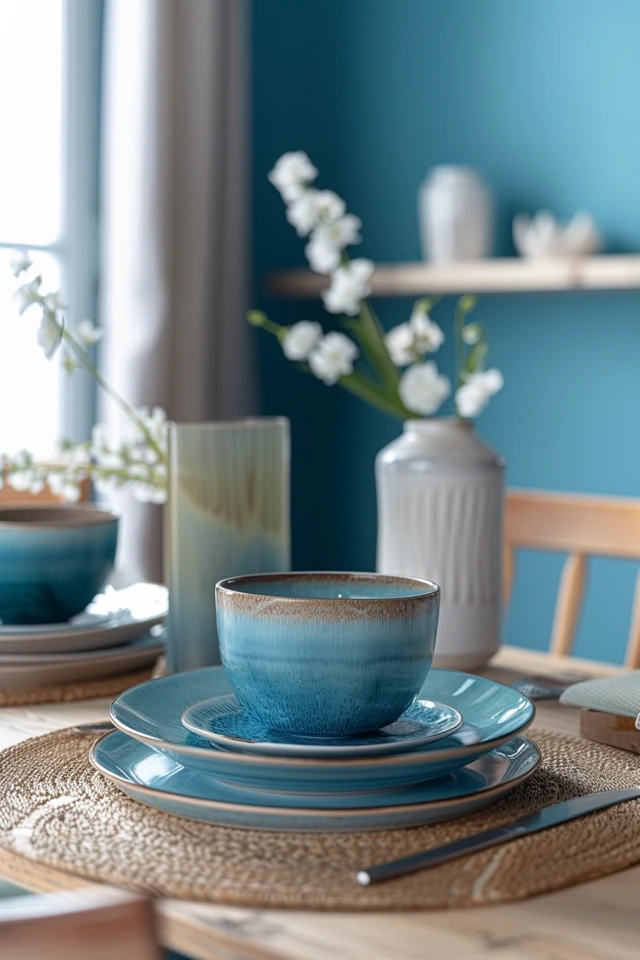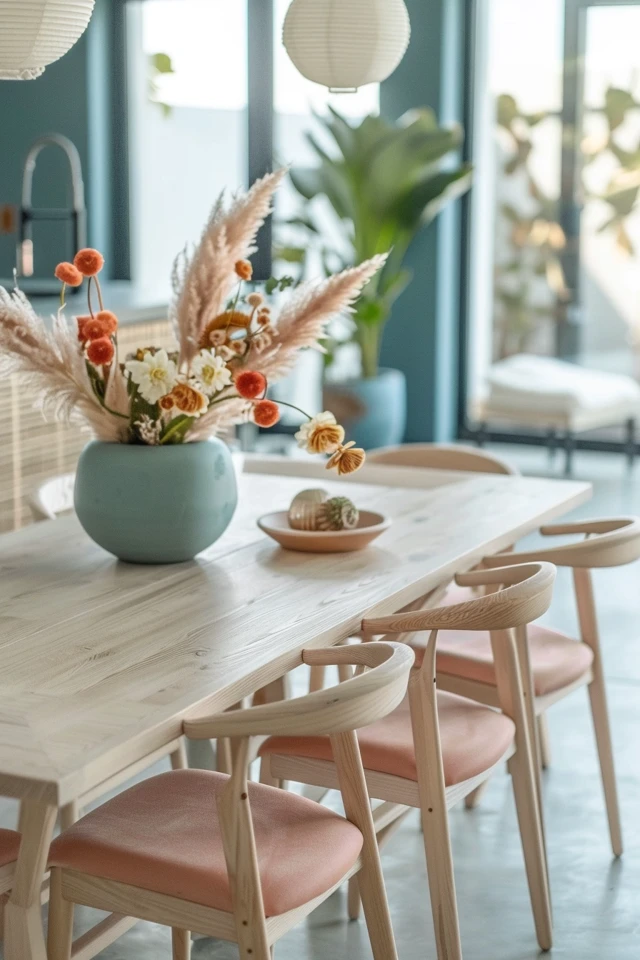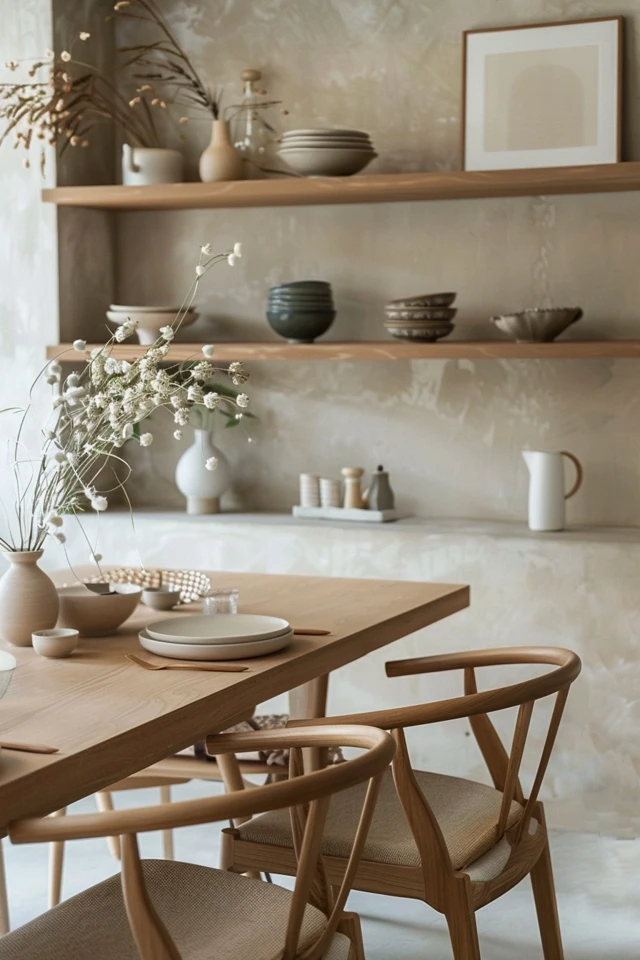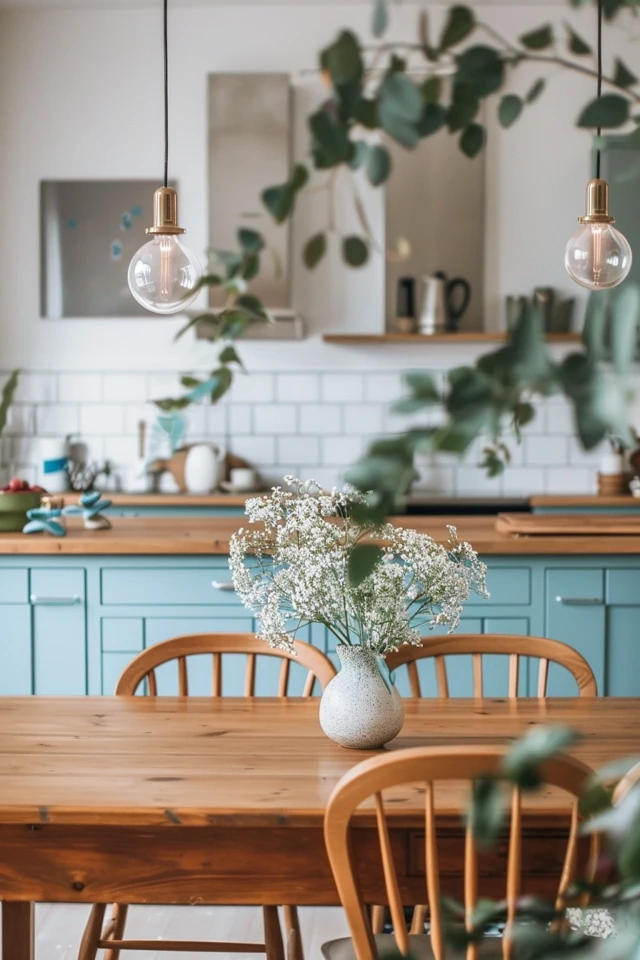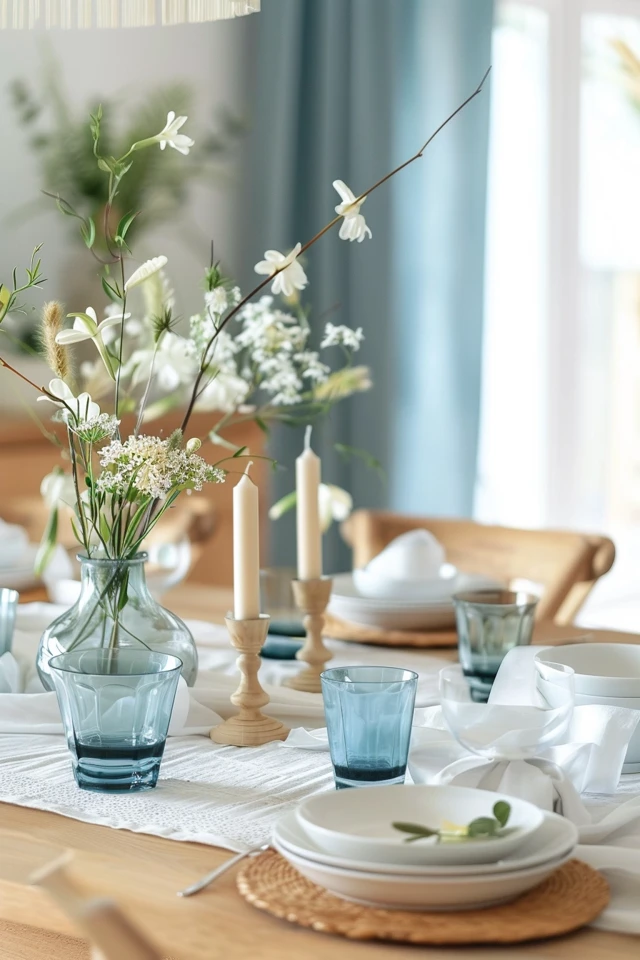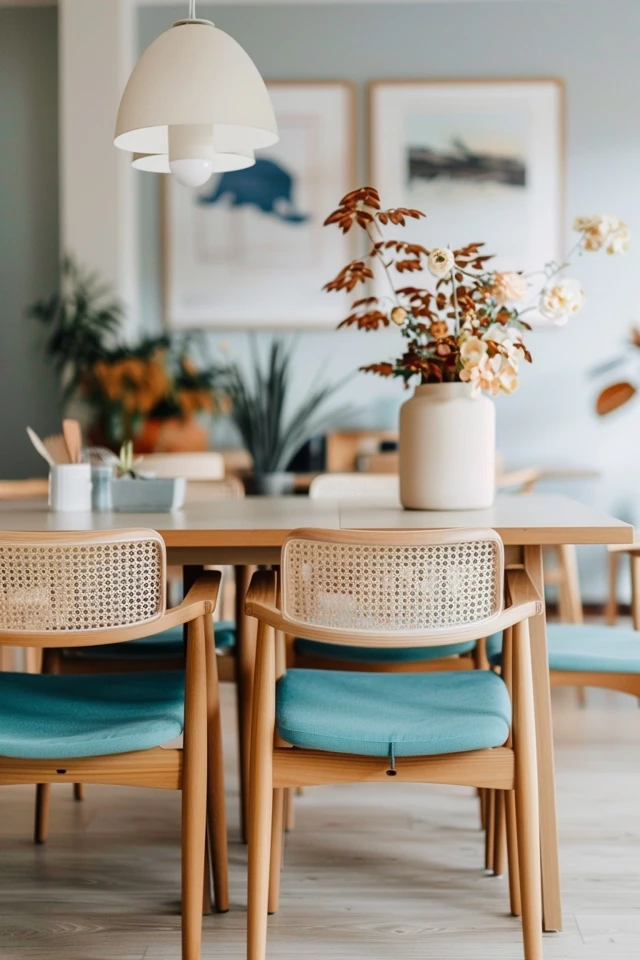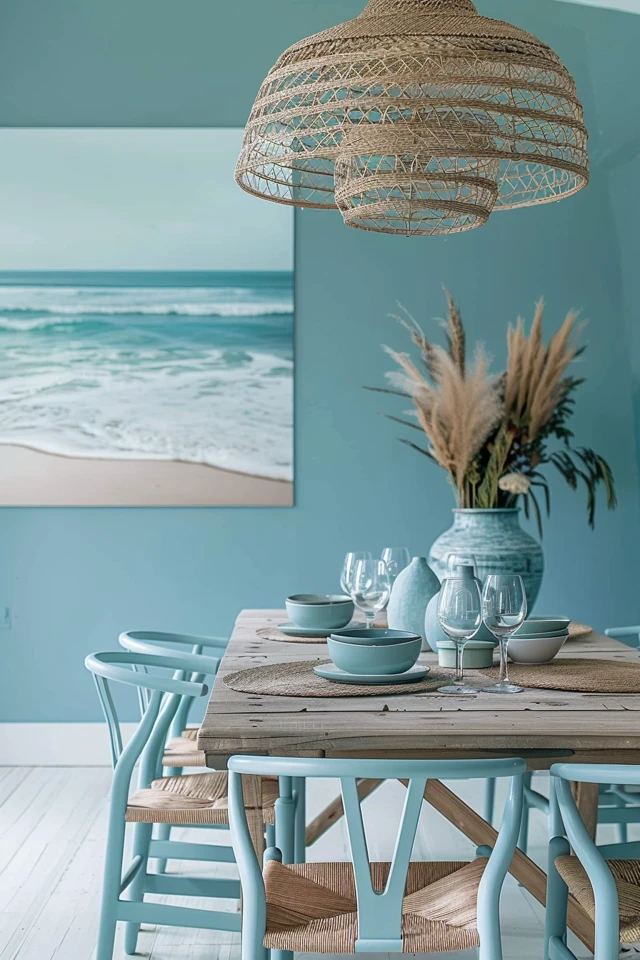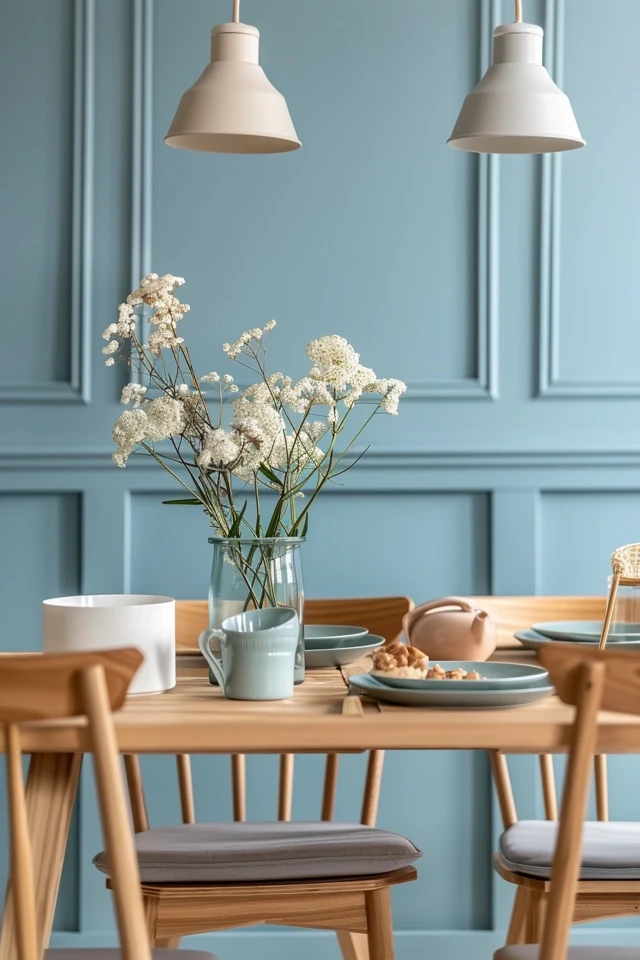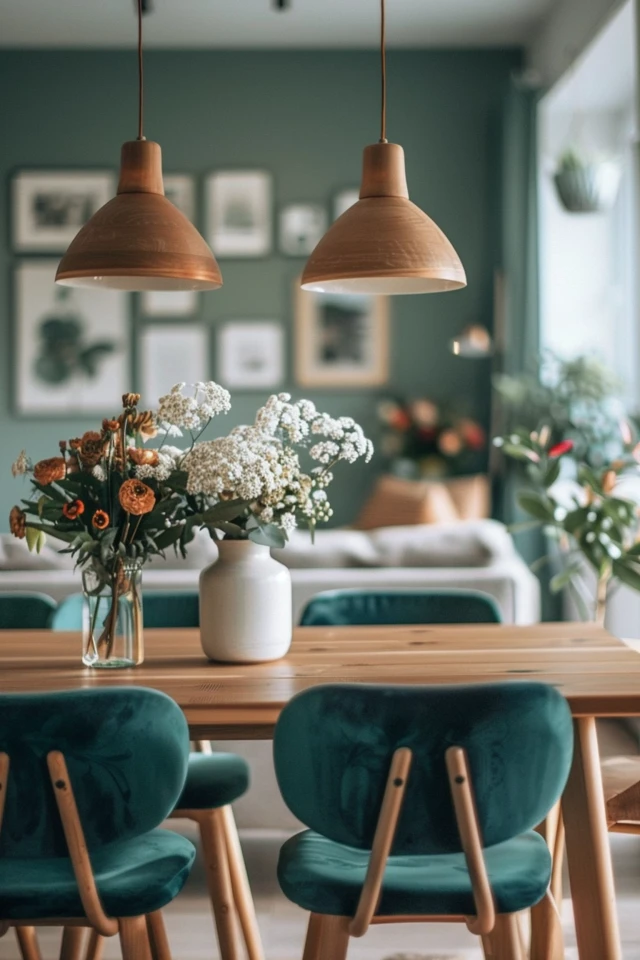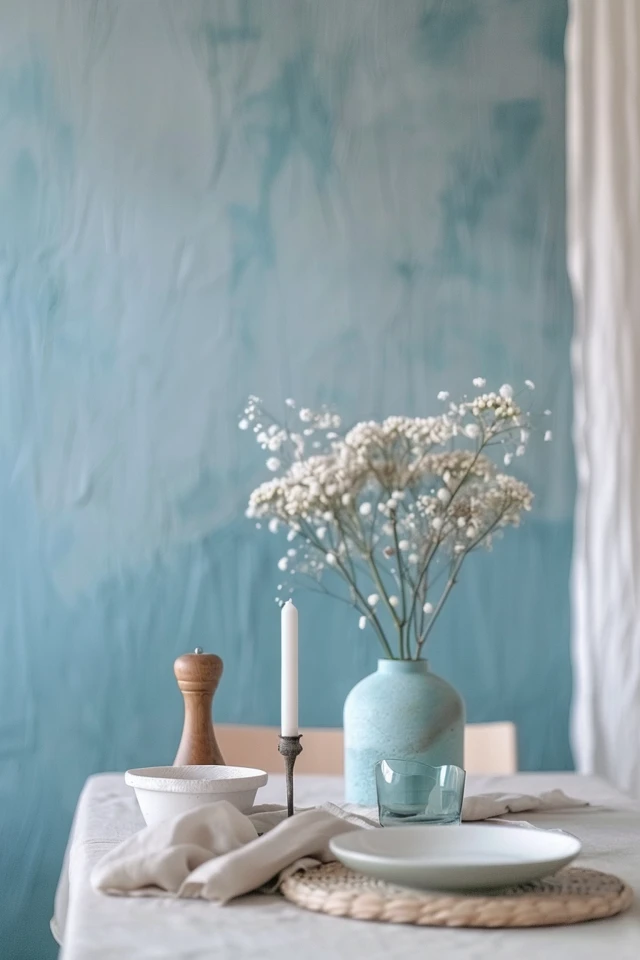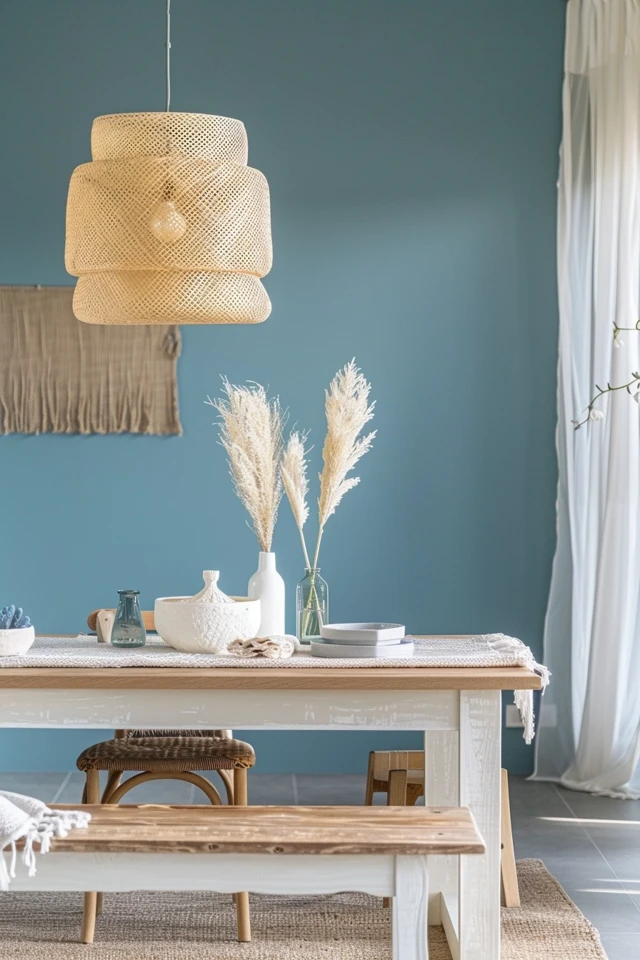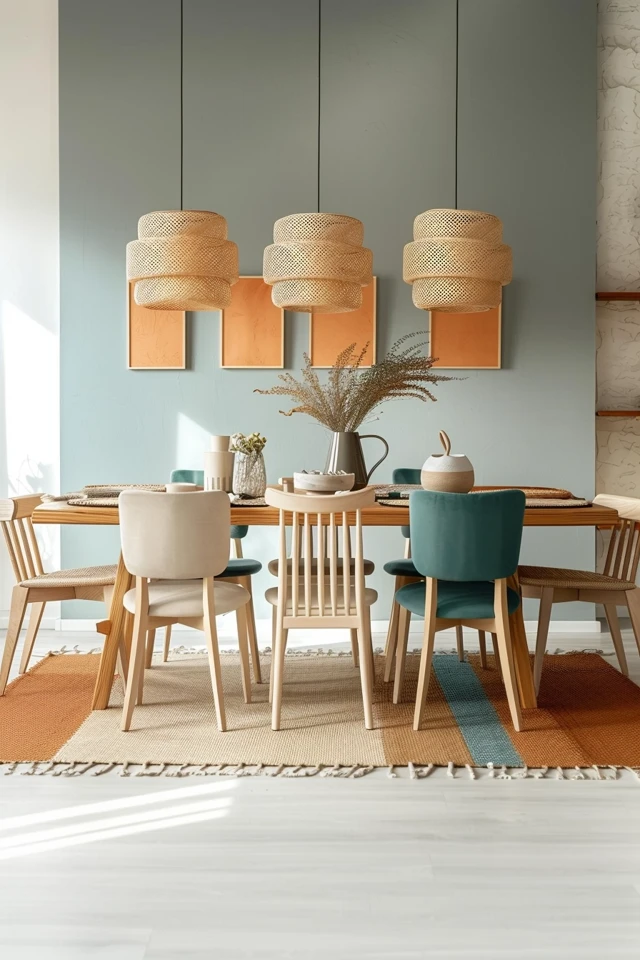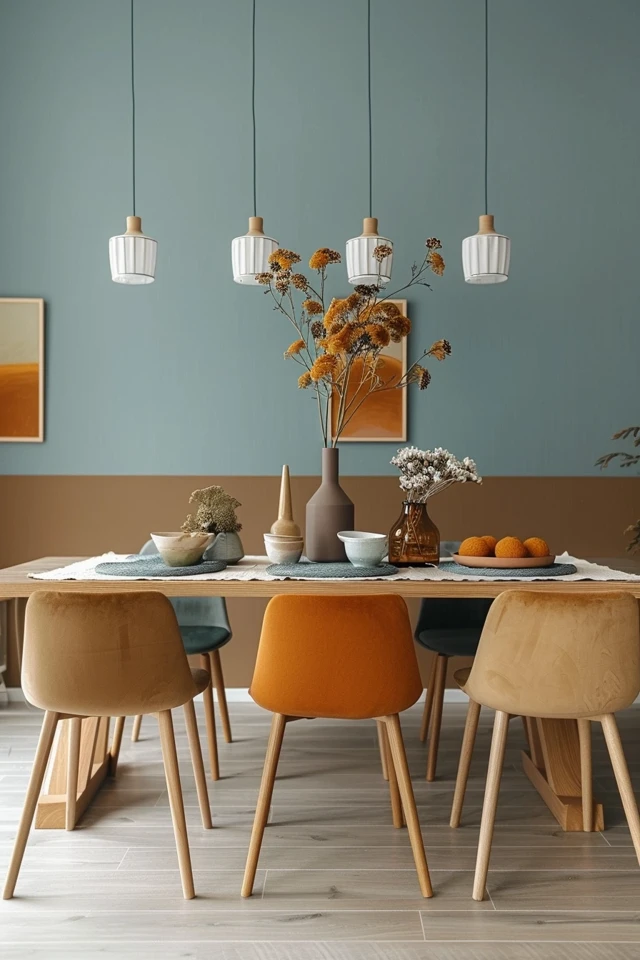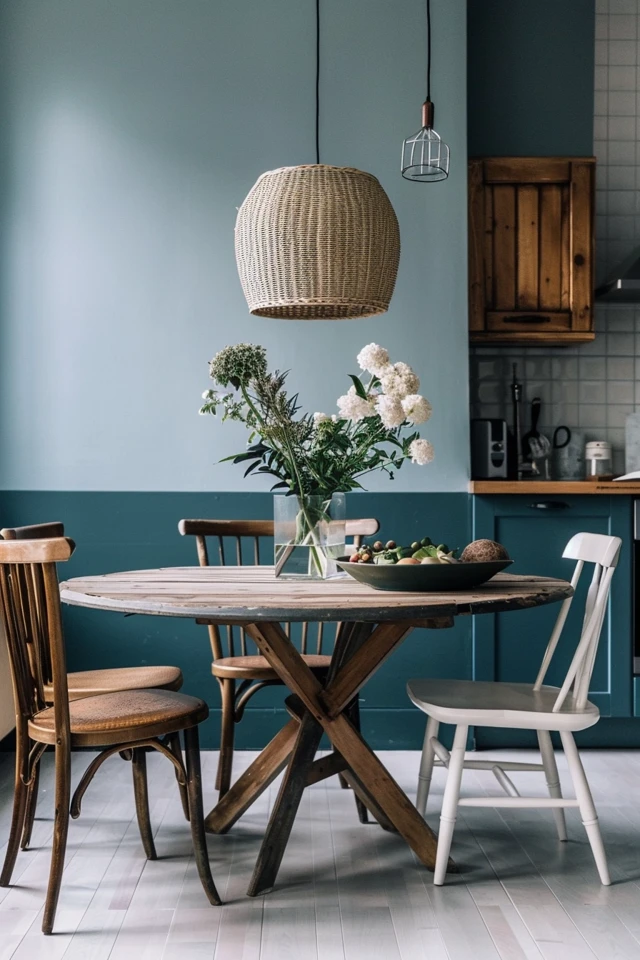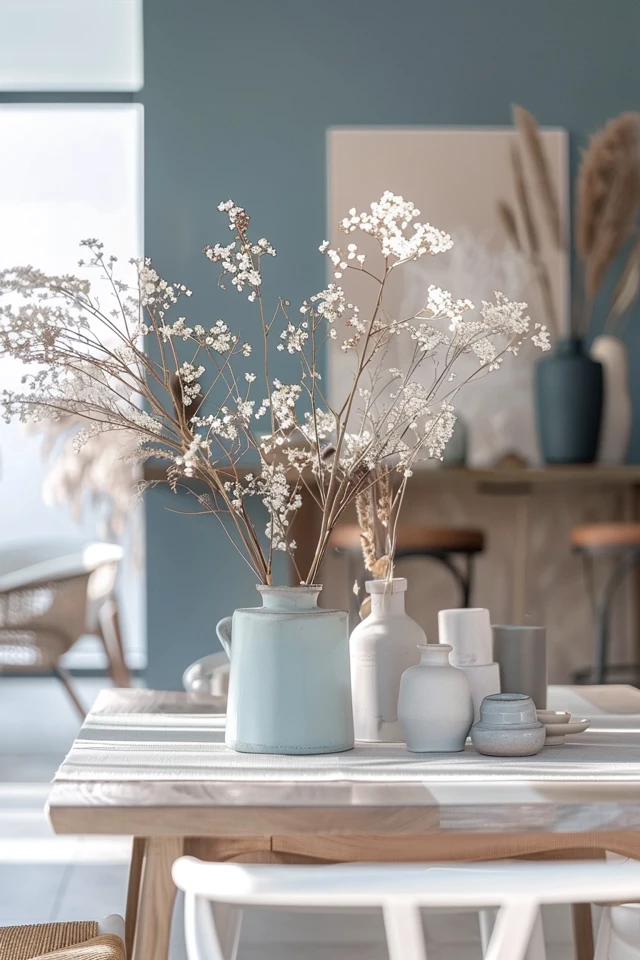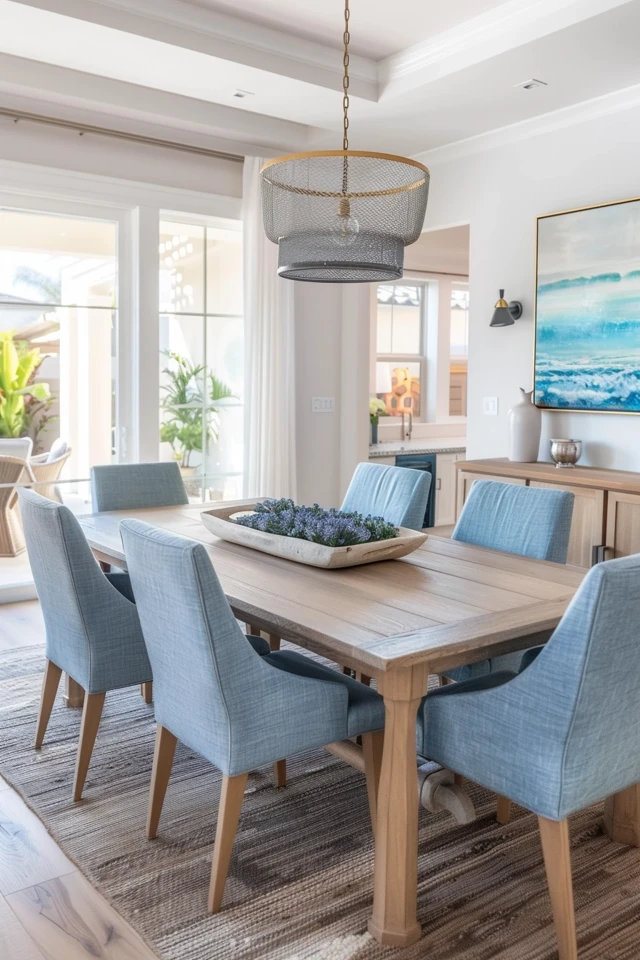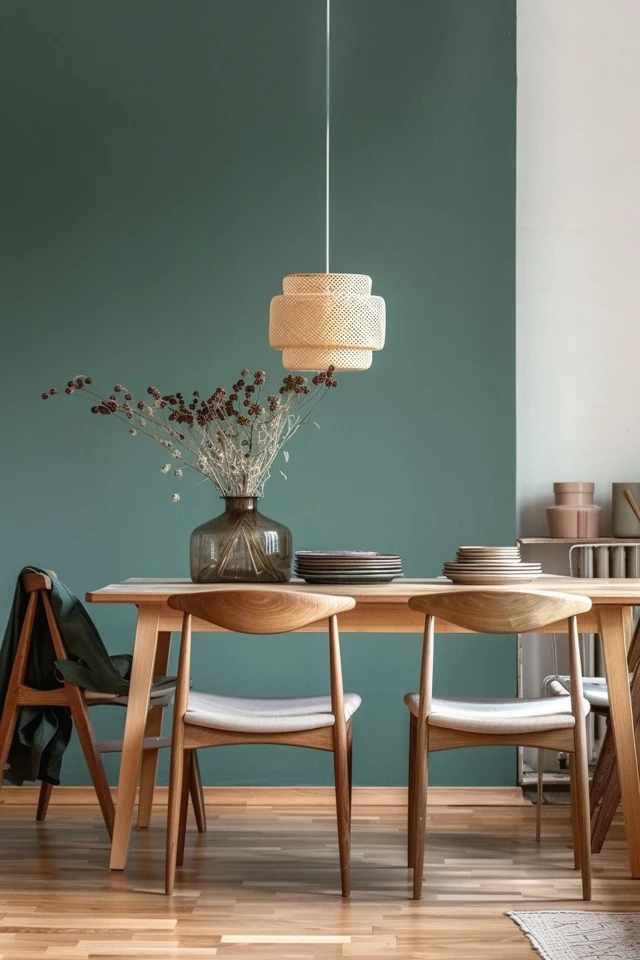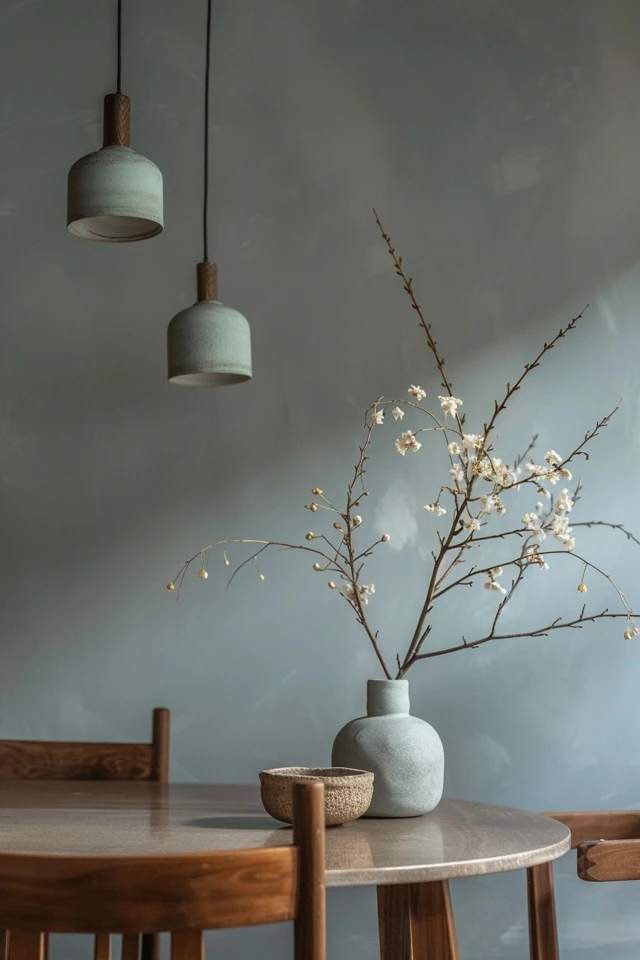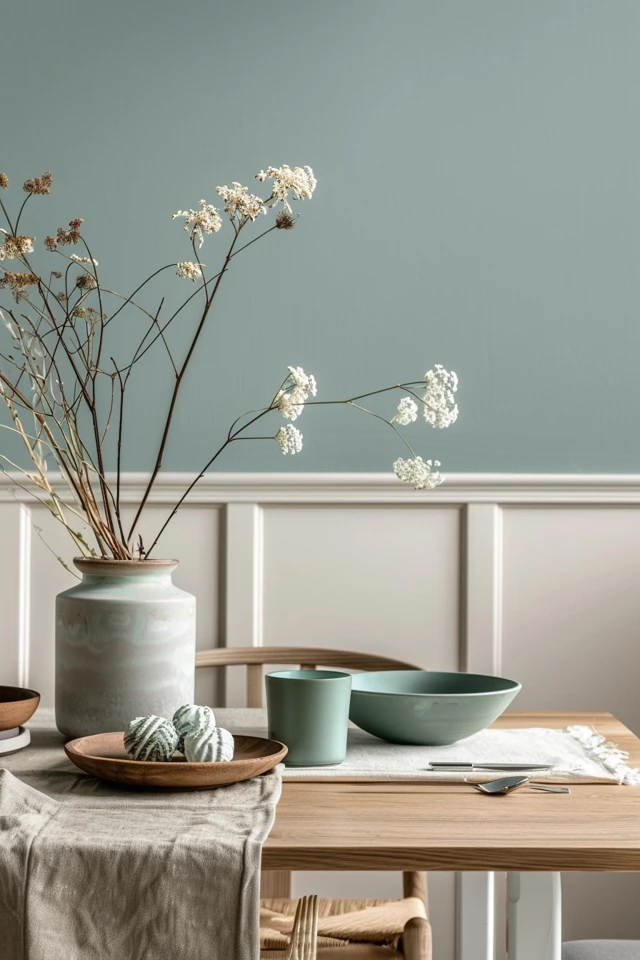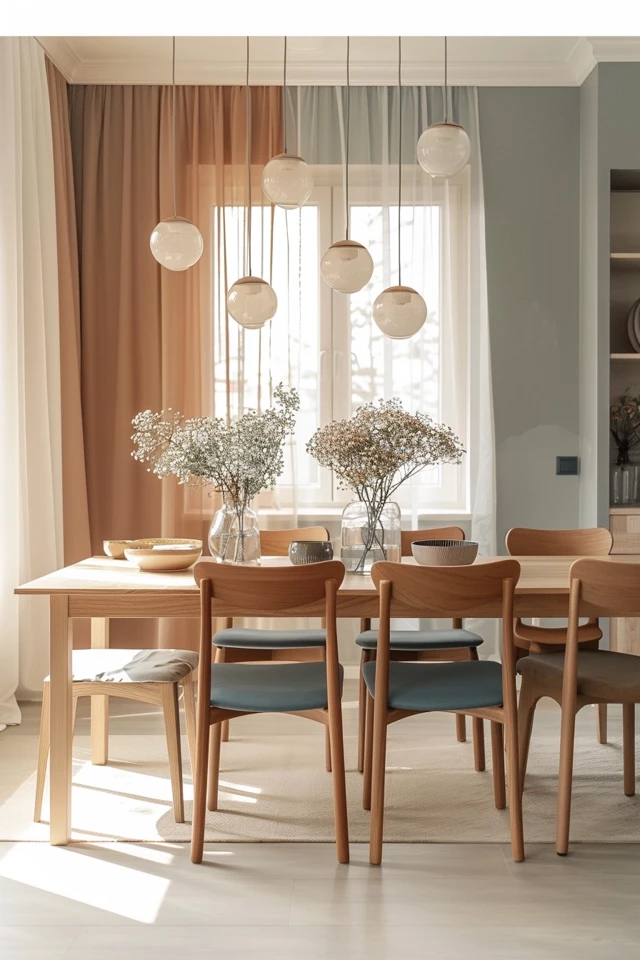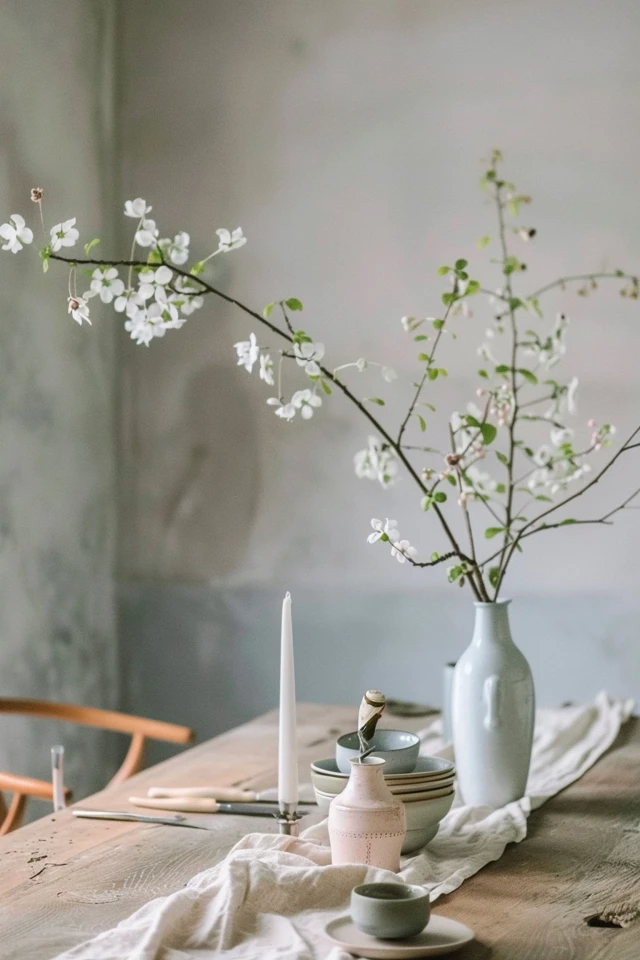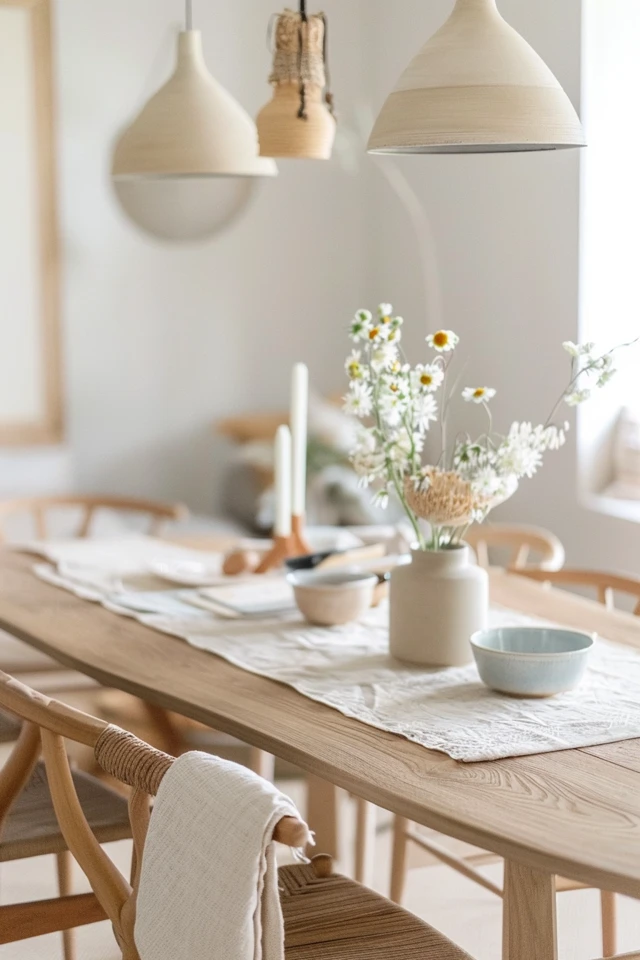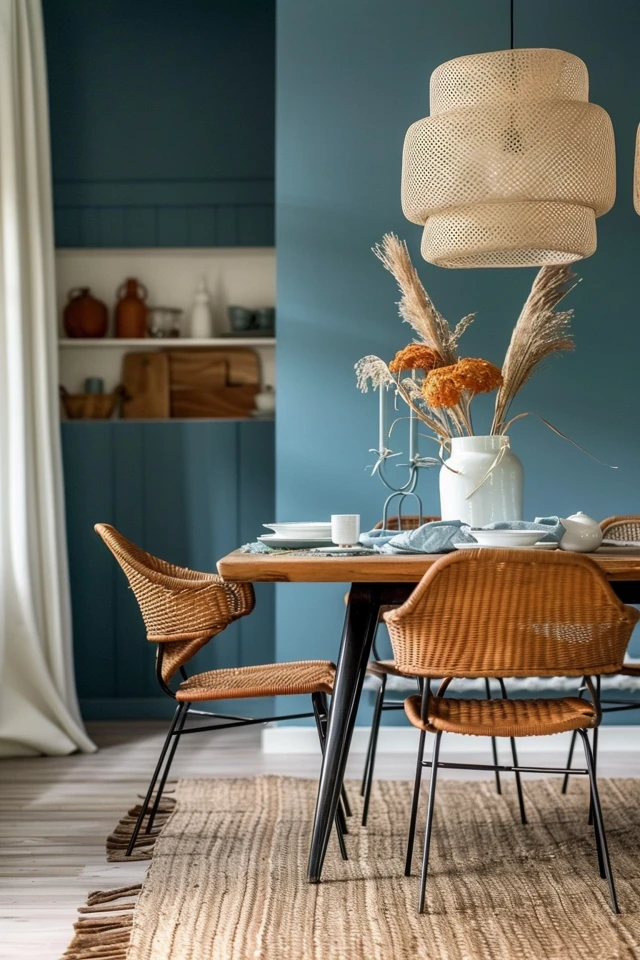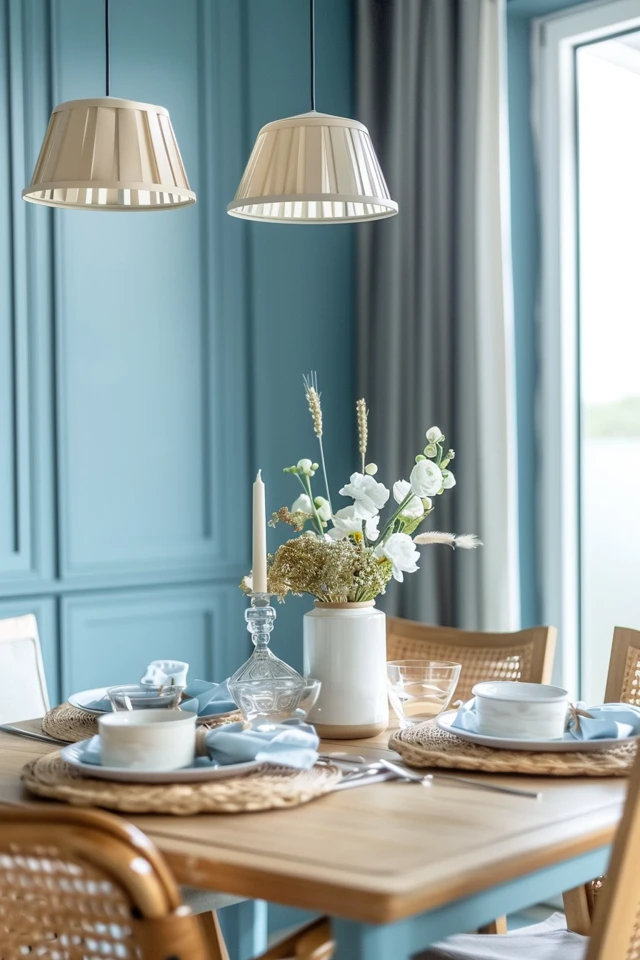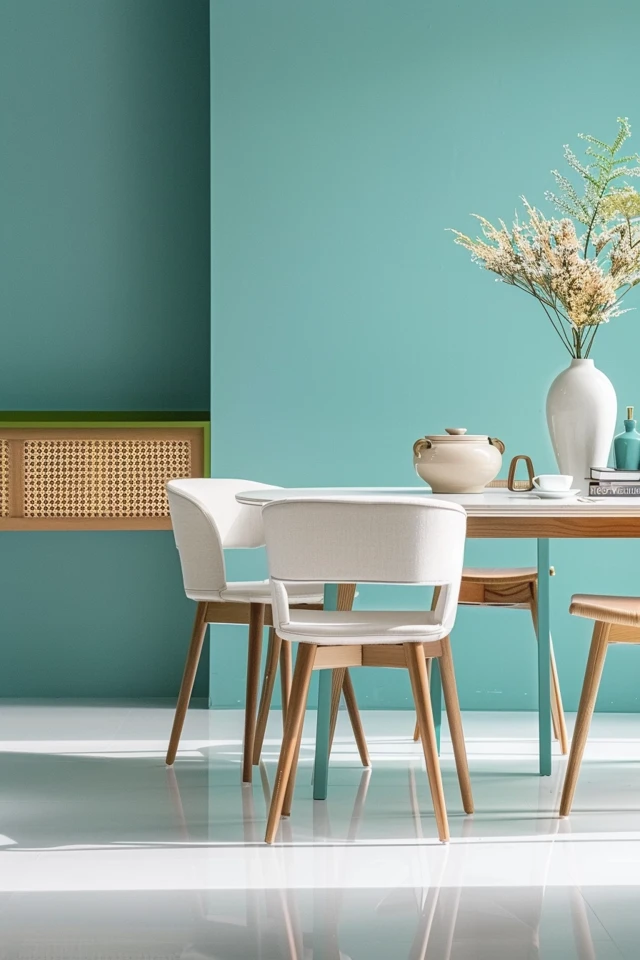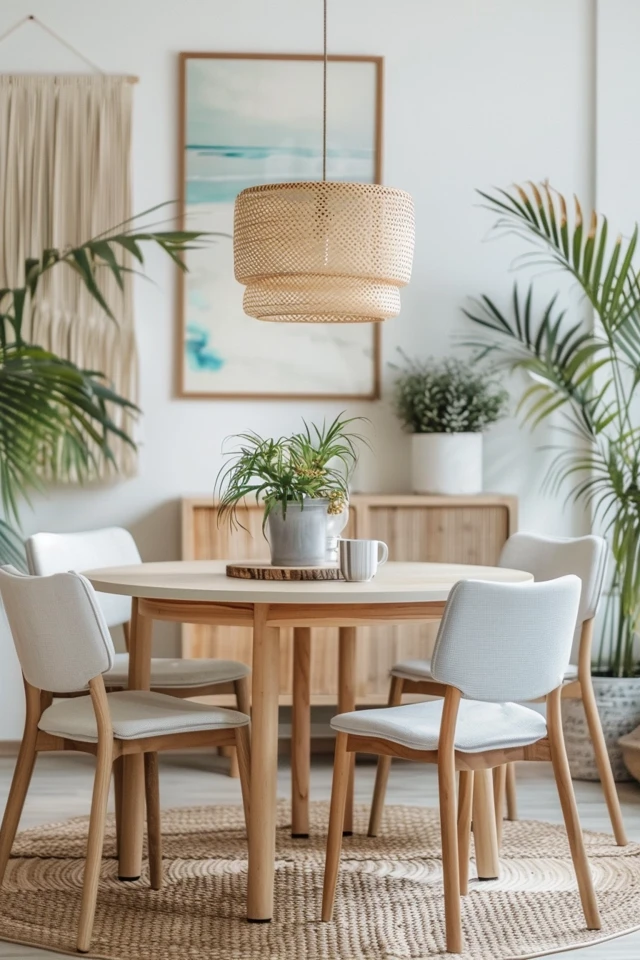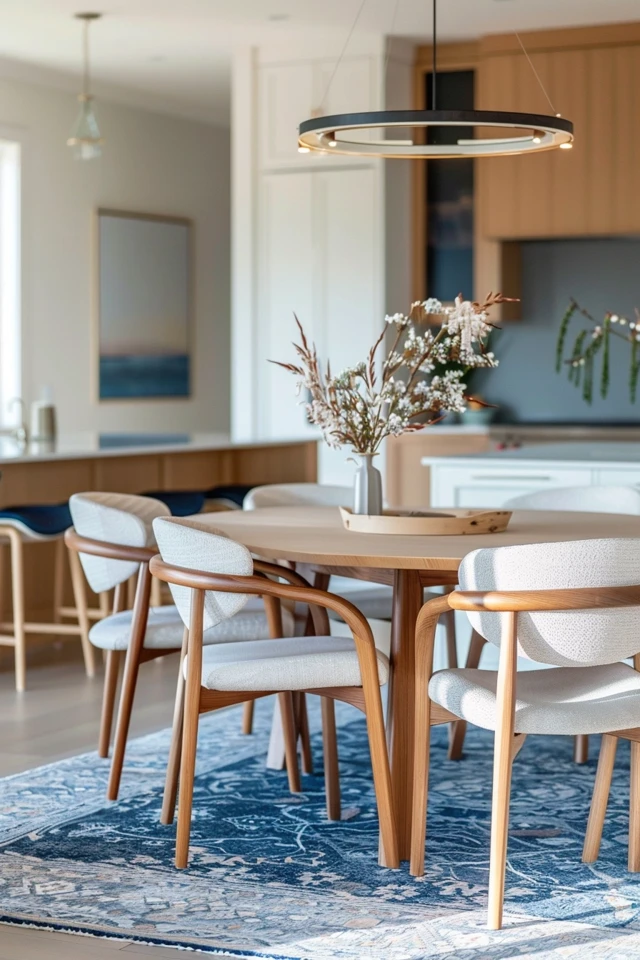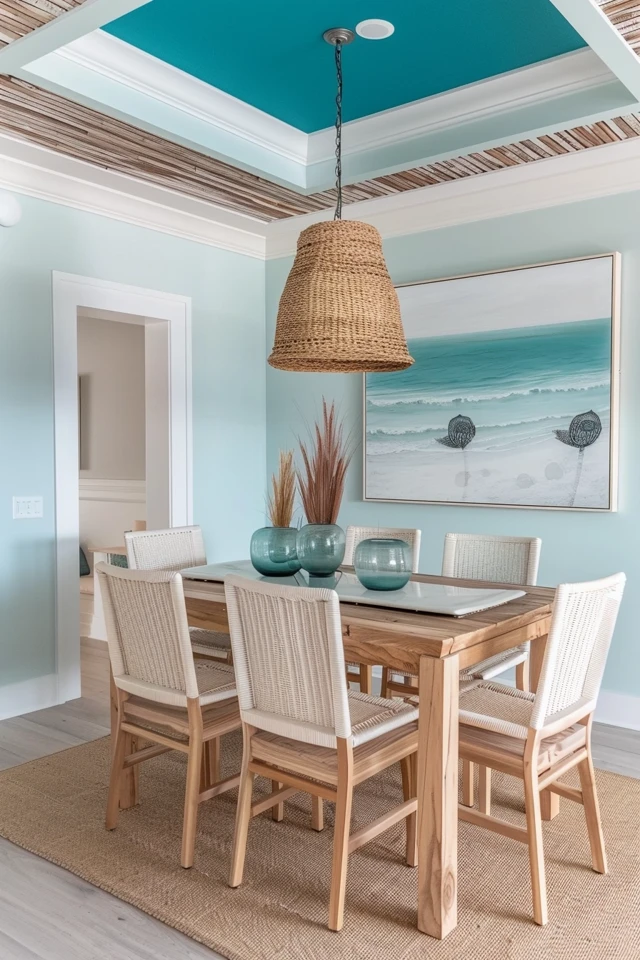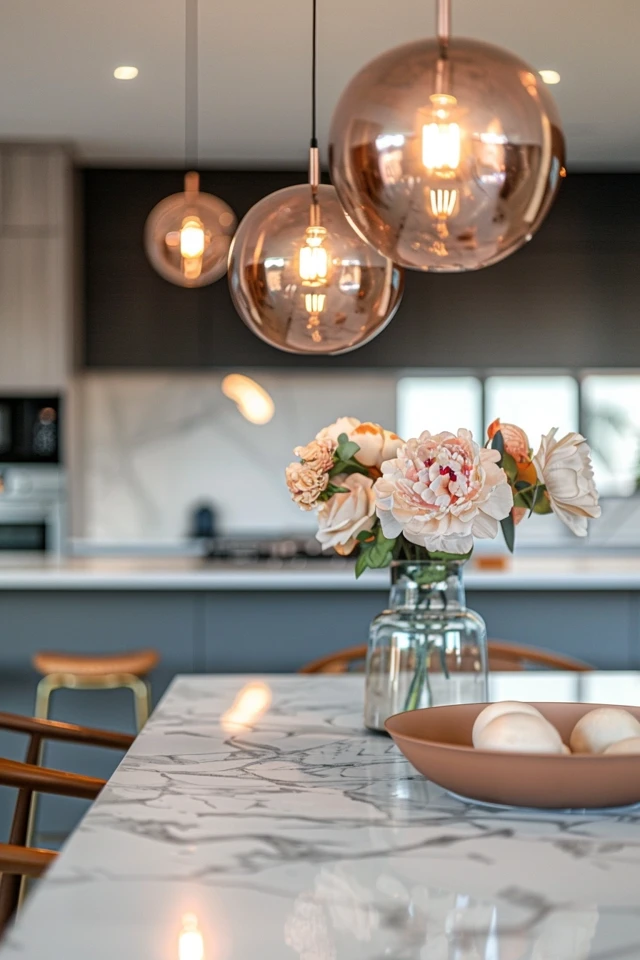Transforming your dining room into a coastal haven can bring a refreshing and relaxing atmosphere to your home. The right color scheme plays a crucial role in achieving this look, reflecting the serene and airy feel of the beach. As an architect and interior designer specializing in evidence-based design, I will guide you through some inspiring coastal dining room color schemes to help you create a fresh and inviting space.

Key Takeaways
- Embrace Light and Airy Colors: Use whites, blues, and sandy neutrals.
- Incorporate Ocean-Inspired Hues: Add accents with turquoise, seafoam green, and coral.
- Utilize Natural and Organic Tones: Integrate shades of sand, driftwood, and stone.
- Balance Light and Dark Contrasts: Use darker shades sparingly to add depth.
- Create Cohesion with Complementary Colors: Ensure all elements work together harmoniously.
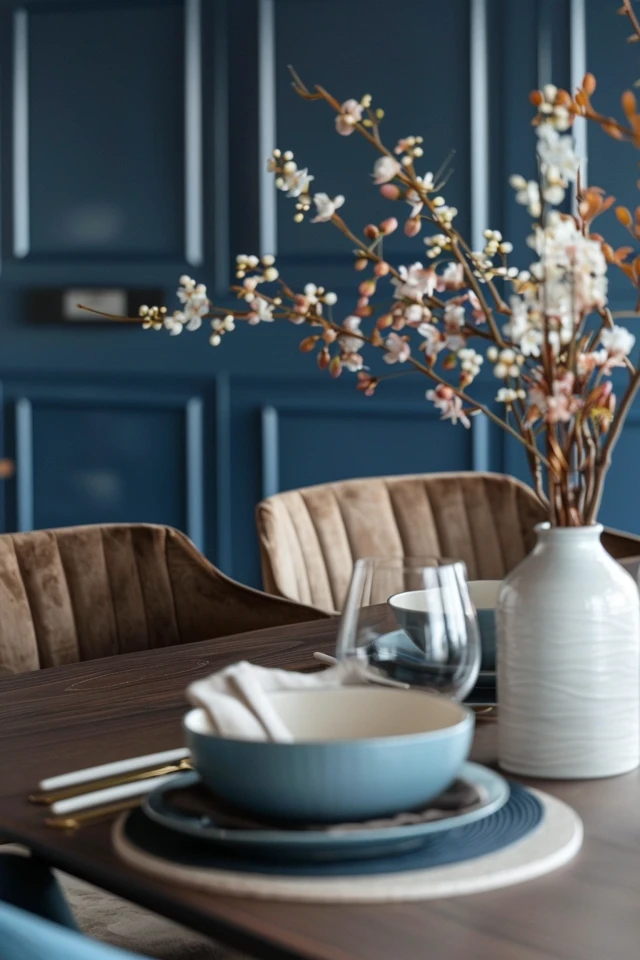
1. Embrace Light and Airy Colors
The foundation of a coastal dining room color scheme is light and airy colors. Whites, blues, and sandy neutrals create a calming and open atmosphere that evokes the seaside.
Start with white or light beige walls to reflect natural light and make the room feel more spacious. These colors create a clean, bright backdrop that enhances the overall sense of airiness. Soft blues can be introduced through table linens, curtains, and accent walls to evoke the serene hues of the sky and sea.
These base colors not only set the tone for a coastal dining room but also provide a versatile backdrop that allows you to incorporate various other colors and textures to enhance the coastal theme.
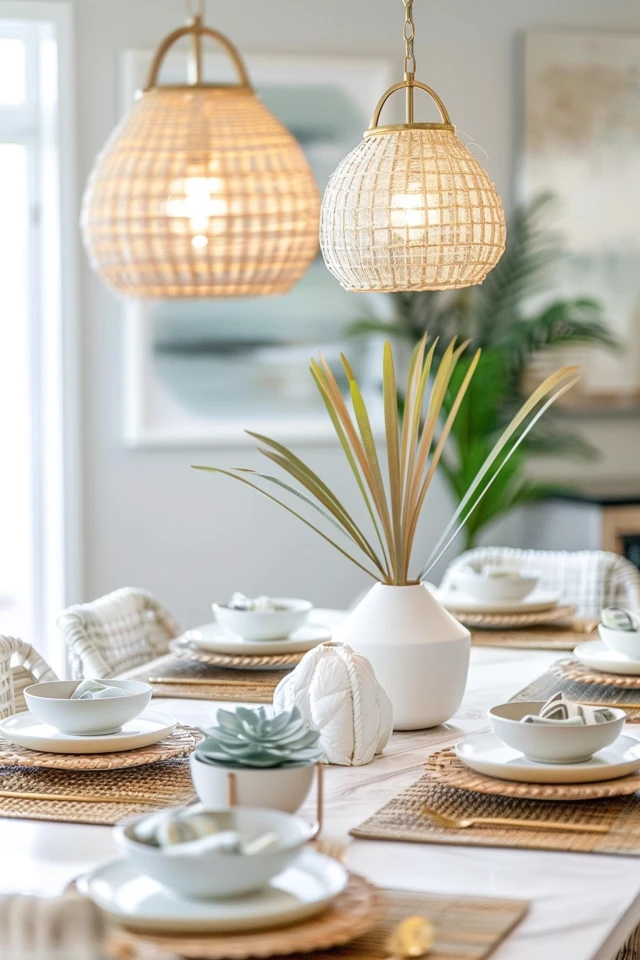
2. Incorporate Ocean-Inspired Hues
While the base colors should be light and neutral, adding accents of ocean-inspired hues can bring depth and vibrancy to your coastal dining room. Turquoise, seafoam green, and coral are excellent choices for adding pops of color that enhance the beachy vibe.
Turquoise can be used for decorative items such as placemats, napkins, and dishware. This color mimics the clear waters of the ocean and adds a refreshing touch. Seafoam green can be incorporated through artwork, rugs, or small furniture pieces, adding a subtle yet vibrant splash of color.
Coral provides a warm contrast and can be used in smaller accents like cushions, artwork, or decorative accessories. These colors should be balanced with the lighter base colors to maintain the serene and cohesive look of the coastal theme.

3. Utilize Natural and Organic Tones
Incorporating natural and organic tones into your coastal dining room adds warmth and texture, creating a more inviting and grounded atmosphere. Shades of sand, driftwood, and stone can enhance the overall coastal aesthetic.
Consider using sand-colored textiles for tablecloths, rugs, or curtains. These neutral tones provide a soft, warm backdrop that complements the cooler ocean-inspired hues. Driftwood shades can be introduced through wooden furniture, picture frames, or decorative elements, adding an earthy and rustic touch.
Stone tones, such as light grays or taupes, can be used for larger elements like furniture or flooring. These colors bring a sense of solidity and stability, grounding the space while maintaining a natural and organic feel.
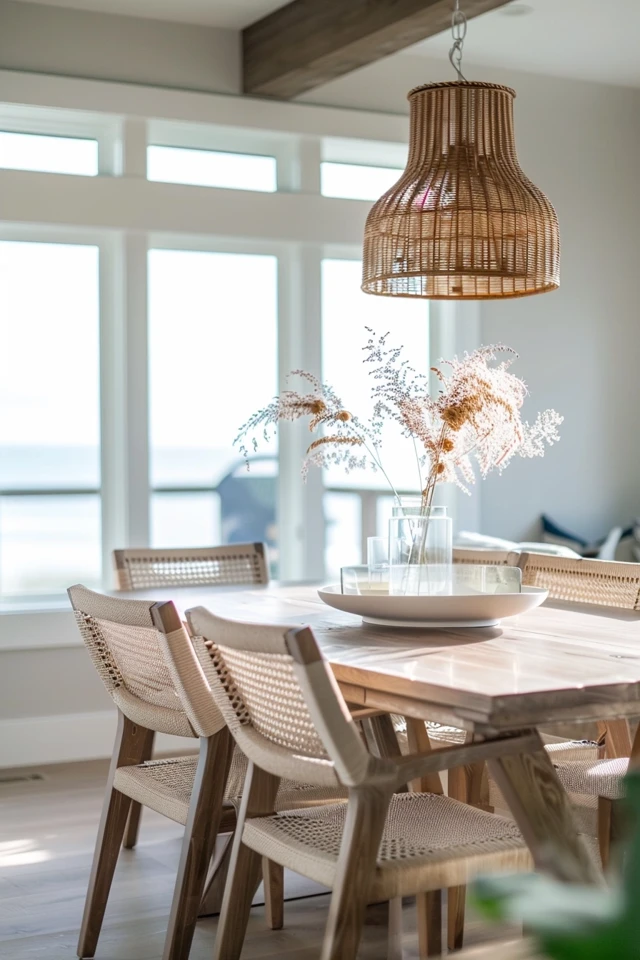
4. Balance Light and Dark Contrasts
While light and airy colors are key to a coastal palette, incorporating darker shades sparingly can help ground the space and add depth. Balancing light and dark contrasts ensures the room feels dynamic and visually interesting.
Darker shades, such as navy blue or deep gray, can be used for accent pieces like throw pillows, blankets, or small furniture items. These colors can add a touch of sophistication and create focal points within the room. For example, a navy blue accent chair or a dark gray sideboard can provide contrast without overpowering the overall light and airy feel.
When using darker colors, make sure they are balanced with plenty of lighter tones to maintain the open and breezy atmosphere of a coastal dining room. The key is to use them strategically to enhance the design without detracting from the serene ambiance.
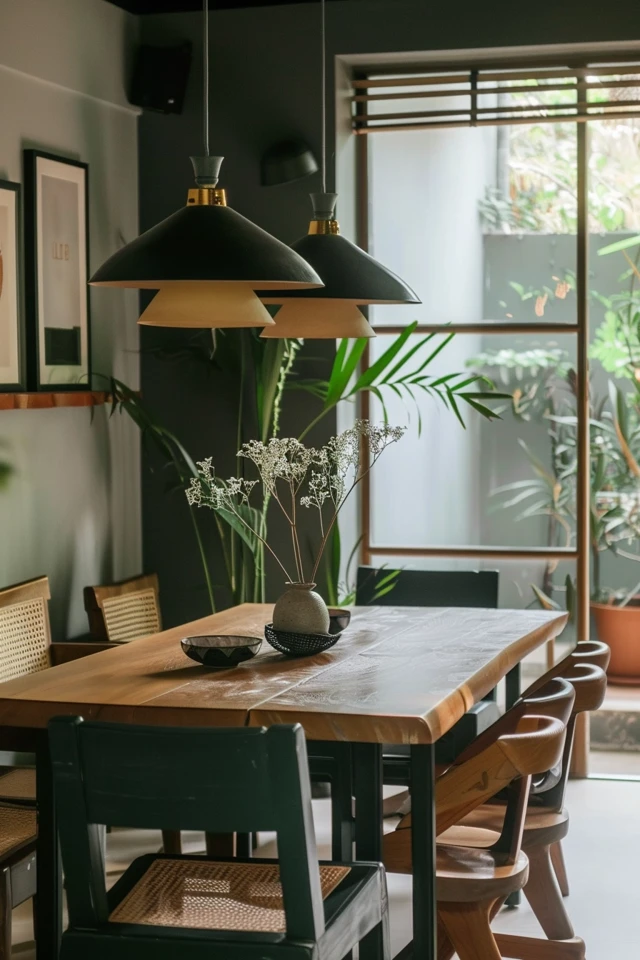
5. Create Cohesion with Complementary Colors
A successful coastal dining room color scheme requires a cohesive flow, where all elements work together harmoniously. Complementary colors should be chosen carefully to ensure a unified look that ties the entire space together.
To achieve this, consider creating a color scheme based on the natural environment of the coast. Think about the colors you see at the beach: the blues of the water, the sandy tones of the shore, the greens of the coastal vegetation, and the warm hues of the sunset. By incorporating these colors into your design, you can create a space that feels connected to nature and evokes the tranquility of the seaside.
Use complementary colors in your decor, textiles, and accessories to tie the room together. For example, if your main color is soft blue, consider adding accents of sandy beige, seafoam green, and coral to create a balanced and cohesive look. This approach ensures that all elements work together seamlessly, enhancing the overall coastal theme.
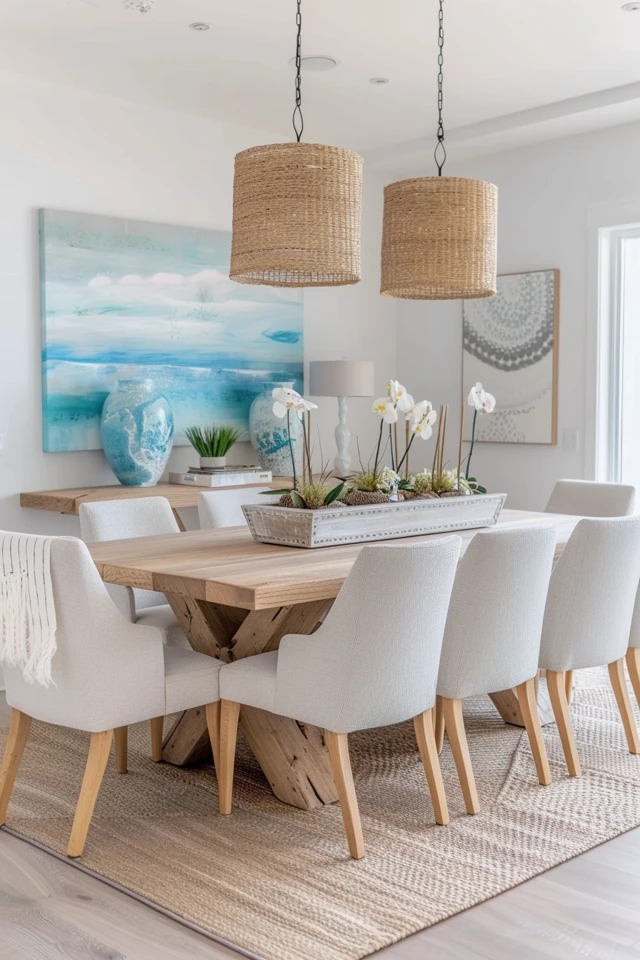
Conclusion
Choosing the right color scheme is essential in creating a fresh and inviting coastal dining room. By embracing light and airy base colors, incorporating ocean-inspired hues, utilizing natural and organic tones, balancing light and dark contrasts, and creating cohesion with complementary colors, you can transform your dining room into a serene retreat that evokes the calming essence of the beach.
As an architect and interior designer with a focus on evidence-based design, I can assure you that these elements not only enhance the aesthetic appeal of your space but also promote a sense of well-being and relaxation. The soothing colors and thoughtful design choices work together to create a harmonious and inviting environment.
Whether you’re starting from scratch or refreshing your current dining room, these tips will help you achieve the perfect coastal color scheme. With a little creativity and attention to detail, you can enjoy a beautiful and serene dining room that brings the beauty and tranquility of the coast into your home every day.
Inspirational Pictures
